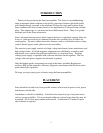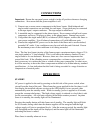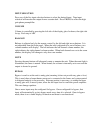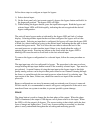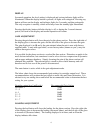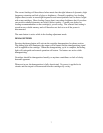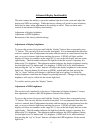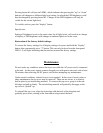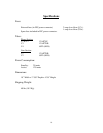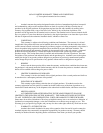Follow these steps to configure an input for bypass:
1) Select desired input.
2) On the front panel only (not remote control), depress the bypass button and hold it in
the depressed position. The bypass LED will light.
3) While holding the bypass button, press the input button again. Both the bypass and
selected input LEDs will blink rapidly, indicating the unit recognized the desired
bypass configuration.
The unit will enter bypass mode as indicated by the bypass LED and lack of volume
display. Selecting another input that has not been configured for bypass will exit the
bypass mode. Selecting an input that is configured for bypass will cause the bypass LED
to blink for a short time before going to the desired input, indicating that the unit is about
to enter the bypass mode. This is to allow the user time to reduce the level of the
surround processor or select another input if there is any doubt about the safety of
entering bypass mode. Pressing any button on the Janus while the bypass LED is
blinking will cause the unit to revert back to the last selected input.
To remove the bypass configuration for a selected input, follow the same procedure as
above.
The tape input may also be configured for bypass. The procedure is the same as above,
except holding the tape input button instead of the currently selected input. Tape must be
pre-selected. A special feature of using the tape input as the bypass input is that high
quality analog sources can be kept in their purest form for two channel listening through
the Janus, or routed through the surround processor when desired, by selecting tape. The
tape output of the Janus, in that case, should be routed to an input of the surround
processor.
Bypass configurations are stored in memory and are retained even if power is removed.
For this reason, it is recommended to remove all bypass configurations if the unit is ever
transferred from one system to another, to prevent possible system damage.
PHASE
The phase button is used to change the absolute phase of the output. When the phase
LED is illuminated, the output is 180 degrees out of phase relative to the input. When
the LED is off, the output is 0 degrees. The correct setting is that which yields the best
focus of image and tightest bass. It will vary from recording to recording, as absolute
phase is rarely maintained throughout the recording and mastering process.
5




